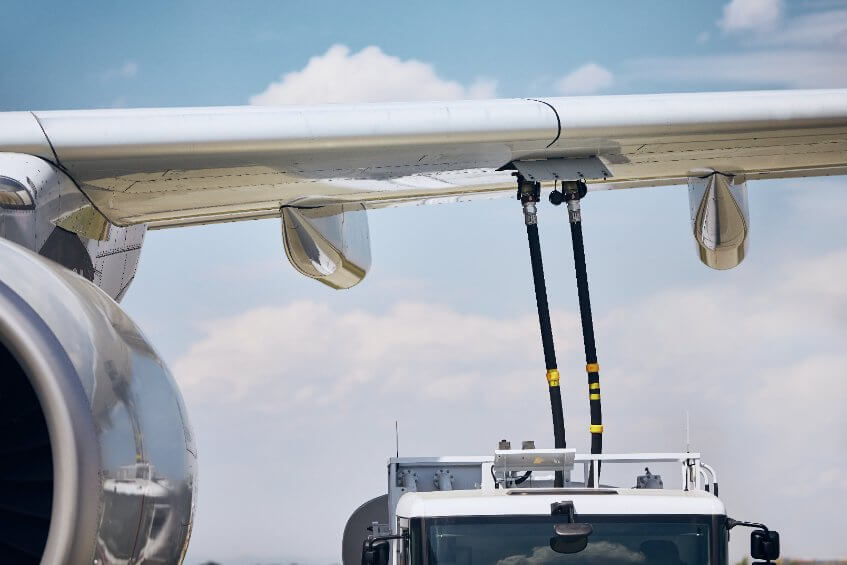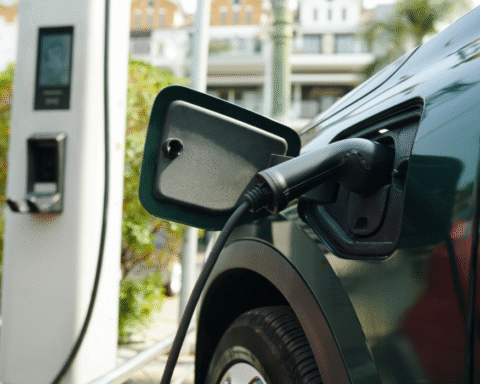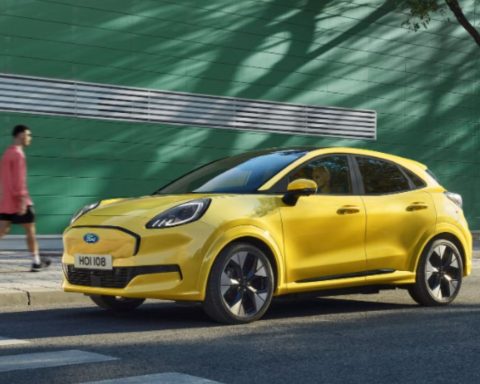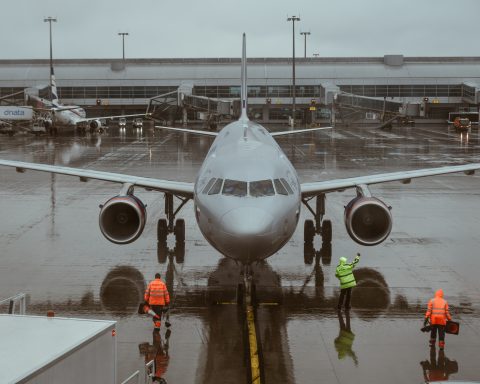When it comes to the airline industry, sustainable aviation fuel may be its ticket to a low-carbon future.
In 2021, the International Air Transport Association (IATA) set a target for the aviation industry to achieve net-zero emissions by 2050. With the sector contributing 2.8% of the world’s total carbon dioxide emissions from fossil fuel combustion, many airlines are considering carbon-capture-and-storage technologies and electric-powered planes. But these innovations may be years away from becoming scalable solutions. Sustainable aviation fuels (or SAFs), however, are an immediate tool that could help airlines kick-start their green transition.
“The use of SAF is expected to contribute around 65% of the reduction in emissions needed by aviation to reach net-zero in 2050,” says Albert Tjoeng, head of corporate communications for the IATA, which defines an SAF as a non-fossil fuel that has the potential to generate lower carbon emissions than conventional kerosene in its life cycle.
In April, Air Canada committed to investing $50 million in SAFs and other carbon-reducing technologies. And according to IATA, more than 50 airlines around the world have used sustainable fuels.
“Airlines bought every drop of SAF available in 2021,” Tjoeng says. “So airlines want to use SAF. The issue is the supply.”
At the moment, industry standards state that . Scientific trials to prove that aircraft can safely run on a solution that’s 100% sustainable are in the works.
There are a number of sustainable alternatives, some commercially available, some in development. Here’s what could be an eco-friendly power source on your next flight:
Cooking oils
Oils and fats are currently the most accessible option, according to Bradley Saville, a professor at the University of Toronto in the school’s Department of Chemical Engineering and Applied Chemistry.
“There’s a lot of growth where you’re seeing refineries being reconfigured because it’s low-cost and the infrastructure required for production is perfectly aligned with existing oil refinery technology,” he says. “The compatibility makes it a very attractive initial pathway.”
In the Netherlands, for example, Neste, an oil refining company, has a partnership with McDonald’s. Since 2020, Neste has picked up used cooking oil from 252 of the fast-food restaurants and refines it into fuel.
Dutch airline KLM has been viewed as a trailblazer for its use of cooking oil as fuel on a commercial flight in 2010. One year later, it scheduled more than 200 trial flights between Paris and Amsterdam using biofuel made from used cooking oil. Lufthansa and Continental Airlines followed suit shortly after.
Saville, who has also been assessing sustainable-fuel life-cycle emissions for the United Nations’ International Civil Aviation Organization, says that oils can reduce greenhouse gas emissions by 80 to 90% compared to fossil fuels.
But to be truly sustainable, Saville adds that the best way to produce this fuel is to use excess or unwanted oil and fat that doesn’t pass food-grade standards instead of growing crops specifically for fuel.
His models also show used oil and fat being the cheapest to produce, at US$1,200 to $1,300 per ton.
Biomass and municipal waste
Saville says that biomass, made from algae, crop residues, animal waste, forestry residue and municipal waste, could also have big potential as an aviation fuel.
“If you look to crop and forest residue and leave just the right amount behind to promote good soil quality, you could replace a fairly high percentage of jet fuel,” he says. “Then with municipal solid waste, you’re solving a waste problem and turning it into energy.”
Biomass has the same 80 to 90% reduction as used oils but come at a slightly higher production cost, at US$1,800 to $1,900 per ton. This is one barrier to implementation, Saville explains, and one reason why these fuels are in short supply. Unlike with waste oils, the infrastructure transition isn’t as seamless and supply chains aren’t set up to source and deliver on this in a big way, he adds.
In 2021, United Airlines used jet fuel made from agricultural waste such as corncobs and corn stalks in a normal passenger flight. And in 2016, the airline and Los Angeles International Airport made a pledge to purchase up to 15 million gallons of sustainable aviation fuel using agricultural waste and non-edible natural oils over a three-year period. Saville considers the airline a leader in this sense, noting it has been the only airline that has consistently made other offtake agreements with fuel producers.
In 2017, British Airlines partnered with U.S.-based Solena Fuels to make and use jet fuel from municipal solid waste. It was the first project in the world to attempt to convert municipal waste into a fuel for airplanes.
Synthetic kerosene
Synthetic kerosene, also known as e-kerosene or power-to-liquid, might show the most promise in terms of its ability to reduce the airline industry’s carbon footprint. It is made by combining hydrogen and carbon dioxide. If the hydrogen is generated using renewable electricity (known as green hydrogen) and the carbon dioxide is captured from the atmosphere, models have shown it to have zero, or very close to zero, carbon emissions.
This is a sustainable fuel that is in the earliest stages of development and implementation.
British energy giant Shell is working on establishing synthetic kerosene operations in Germany and the Netherlands. It produced 500 litres of e-kerosene over three months for a KLM flight in February 2021, from Amsterdam to Madrid, that blended the e-kerosene with conventional fuel.
In October 2021, German non-profit atmosfair opened the first production plant, aiming to produce a carbon-neutral product. Lufthansa announced at the time that it had agreed to buy 25,000 litres of the fuel each year for five years. The fuel will be mixed with conventional kerosene.
Then in June, Airbus, Uniper, Siemens Energy and Sasol also announced that they were partnering to open an e-kerosene production facility in Hamburg that would be operational in 2026.
Saville says he can’t provide cost estimates at this time, but numbers provided by the Dutch Ministry for Infrastructure and Water Management in 2021 calculated a production price tag ranging from €1,500 to €6,800 per tonne, which translates to US$1,800 to $8,200.
What Saville does project, however, is that these options will be mainstream in the next seven or eight years.
“We’ll just be scratching the surface, but we’ll be on a clearer path,” he says. “It will be important for broader policy support and cooperation to take place amongst a bunch of different stakeholders and federal government. This will ensure we can increase production and build the infrastructure.”







